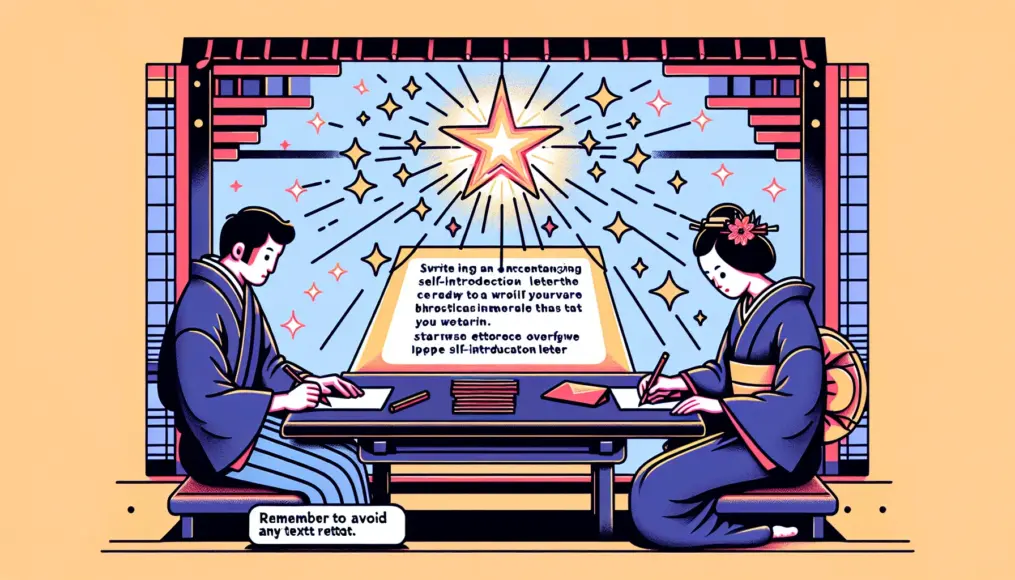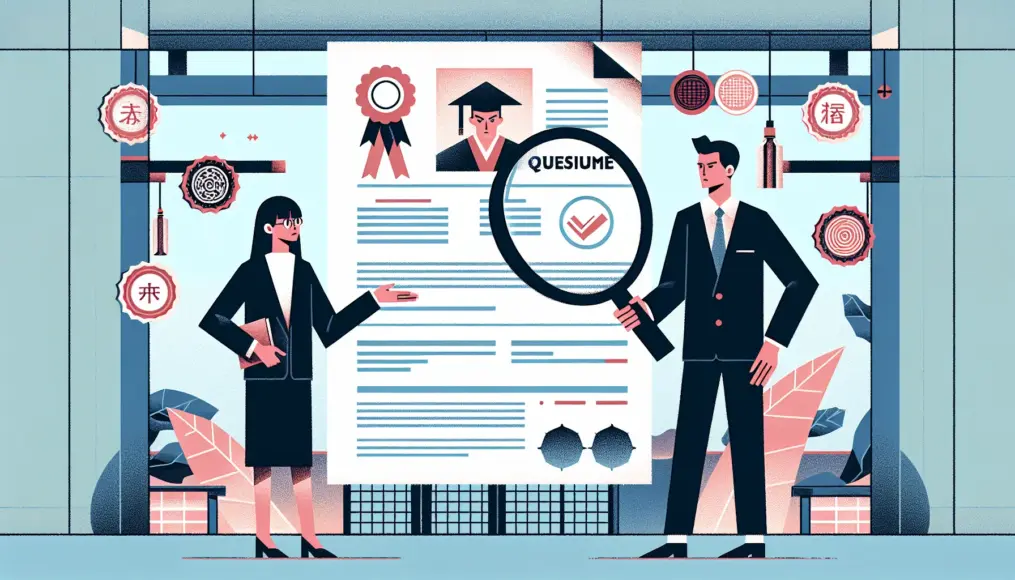Have you ever found yourself wondering how to effectively express who you are when writing a personal introduction? Especially in an interview setting, a well-crafted introduction can serve as a vital tool in showcasing your unique qualities.
In this article, we’ll walk you through how to create a compelling personal introduction and provide specific examples to inspire you. By the end, you’ll have a clear understanding of how to highlight your individuality.
- Explore the role and importance of a personal introduction
- Key points for self-analysis before you start writing
- Tips for effective openings, along with practical examples
What is a Self-Introduction Letter? Understanding Its Importance
A self-introduction letter is a vital document that helps you communicate who you are to others.
Especially in interview situations, your self-introduction letter can significantly influence the first impression you make.
This is why it’s essential to craft a well-structured and thoughtful letter.
The Role of a Self-Introduction Letter
The primary role of a self-introduction letter is to convey your information succinctly.
In this document, you should clearly outline your educational background, work experience, interests, and more.
Additionally, a self-introduction letter is an opportunity to showcase your personality and strengths.
By organizing your thoughts effectively, you can leave a positive impression on the interviewer.
- A self-introduction letter is an important tool for self-presentation
- Clearly stating your educational and professional background is crucial
- It’s a chance to highlight your individual traits and strengths
How to Use Your Self-Introduction Letter in an Interview
During an interview, you can leverage your self-introduction letter to make a lasting impression.
Interviewers often refer to this letter when formulating their questions.
Therefore, how you utilize your self-introduction letter is key.
Specifically, you should be prepared to discuss your experiences and insights based on the content of your letter.
If you want to learn more about how to write a self-introduction letter, check out How to Write a Self-Introduction Letter! Tips and Examples for Success.
- Interviewers frequently reference your self-introduction letter
- Share your experiences based on what you’ve written
- Using your letter effectively can enhance your impression
Preparing to Write Your Self-Introduction
Before you dive into crafting your self-introduction, it’s crucial to do some thorough preparation. A key part of this process is self-analysis, which helps you understand your strengths and experiences. By engaging in this process, you’ll be able to create a more compelling self-introduction.
The Importance of Self-Analysis
Self-analysis is an essential step in writing your self-introduction. By identifying your strengths and interests, you’ll gain clarity on how to present yourself effectively. For instance, reflecting on your past experiences or lessons learned can help you incorporate specific stories into your self-introduction. This process is also vital for building the confidence you’ll need during interviews. For more detailed methods on self-analysis, check out the Complete Guide to Writing Your Self-Introduction for Your Resume.
- Self-analysis is the foundation of your self-introduction.
- Understanding your strengths and interests clarifies how to promote yourself.
- Reflecting on past experiences provides concrete content.
How to Reflect on Your Past Experiences
Reflecting on your past experiences can help you identify the stories you should include in your self-introduction. Start by jotting down your educational background, work history, and hobbies. From there, select the events or achievements that stand out the most to you. Next, think about how these experiences contributed to your personal growth, and you’ll uncover more specific content to enrich your self-introduction.
- Write down your education, work history, and hobbies.
- Choose memorable events and achievements.
- Consider how these experiences contributed to your growth.
Key Points and Sample Sentences for a Successful Self-Introduction Letter
To craft a successful self-introduction letter, it’s crucial to keep a few key points in mind. Knowing how to start effectively can really grab the interviewer’s attention. Additionally, using concrete examples can help you enhance your own self-introduction letter.
How to Start Effectively
The beginning of your self-introduction letter is particularly important. The first sentence can shape the interviewer’s impression of you, so it’s essential to put some thought into it. For instance, mentioning your name, current occupation, and motivation for applying in a concise manner can be very effective. A simple yet memorable opening can leave a lasting impact.
- The opening is especially important for making an impression.
- State your name, occupation, and motivation briefly.
- Aim for a simple and memorable introduction.
Specific Example Sentences and Their Explanation
Referring to specific example sentences can help clarify the content of your self-introduction letter. For example, you might say, “My name is Your Name], and I studied economics at [Your University]. I currently work in sales at [Your Company], where building trust with customers is a priority for me.” This type of sentence clearly presents your educational background and current job while effectively conveying your strengths. Furthermore, by demonstrating how you can contribute to the organization, you can make a strong impression on the interviewer. For more tips on crafting an outstanding self-introduction, be sure to check out this [Guide to Writing an Eye-Catching Self-Introduction for Your Resume!.
- Use specific example sentences to clarify your content.
- Clearly state your educational background and current job to convey your strengths.
- Highlight how you can contribute to enhance your impression.
How to Enhance Your Self-Introduction
A self-introduction can become even better with a little review after writing it. By incorporating feedback from others or seeking help from professionals, you can discover improvements you might not have noticed on your own. In this section, we’ll delve into effective ways to enhance your self-introduction.
How to Incorporate Feedback
Once you’ve drafted your self-introduction, it’s crucial to get others to take a look. Sharing it with friends and family for their thoughts can be incredibly beneficial. Their insights can reveal expressions and content adjustments that you might not have considered. Additionally, revisiting and revising based on their feedback will significantly improve the quality of your self-introduction.
- Share your self-introduction with others
- Use their feedback to make improvements
- Keep revising to enhance quality
Benefits of Seeking Professional Help
Another effective method for polishing your self-introduction is to enlist the help of a professional. Experts can provide an objective evaluation of your self-introduction and offer specific advice. This can lead you to incorporate fresh perspectives and expressions that you may not have thought of. By working with a professional, you can create a more compelling self-introduction, ultimately leaving a better impression during interviews. For tips on how to prepare for interviews successfully, check out The First Step to Success! A Comprehensive Guide to Interview Preparation.
- Gain objective feedback by consulting a professional
- Incorporate new perspectives with expert advice
- Create a more effective self-introduction
Summary
A personal statement is an essential tool for showcasing your unique qualities. By referring to effective writing techniques and concrete examples, you can create a more impactful personal statement. Additionally, incorporating feedback or seeking help from professionals can further enhance its quality.
- A personal statement is a crucial document for representing yourself
- Strengthen your impression with creative openings and specific examples
- Utilize feedback and professional assistance to improve quality
I hope your personal statement turns out to be fantastic! Feel free to share your thoughts or questions in the comments section.



Comment